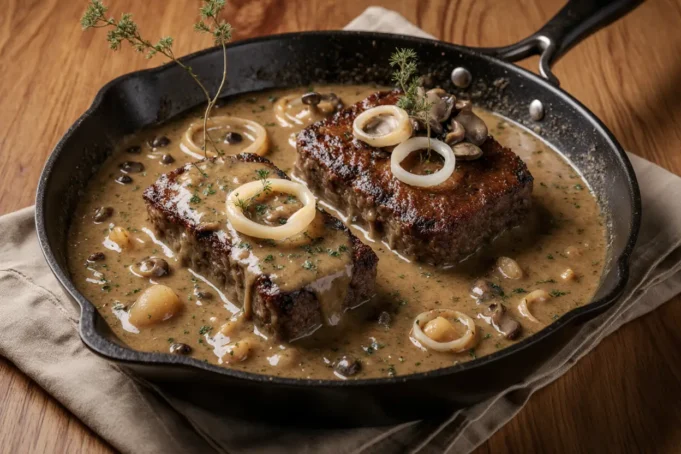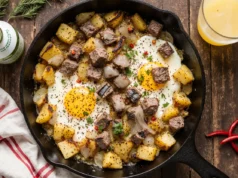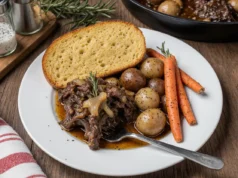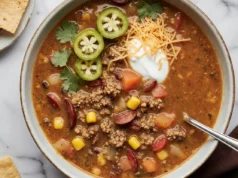Did you know that 68% of home cooks avoid grilling T-bone steaks because they believe achieving restaurant-quality results requires professional equipment and years of culinary training? This widespread misconception has prevented countless steak enthusiasts from mastering one of the most rewarding grilling experiences available to the home chef. The description of a perfectly grilled T-bone steak – with its distinctive bone separating tender filet and robust strip steak, crowned with aromatic herb butter – represents the pinnacle of backyard grilling excellence.
The truth is that grilling the perfect T-bone steak relies more on understanding fundamental cooking principles than expensive equipment. When you master the science of heat distribution, protein coagulation, and fat rendering, you unlock the ability to create steakhouse-quality results in your own backyard. This isn’t just about cooking meat; it’s about orchestrating a symphony of flavors, textures, and aromas that transform a simple cut of beef into an unforgettable dining experience.
The herb butter component elevates this classic preparation from good to extraordinary, adding layers of fresh, aromatic complexity that complement the beef’s natural richness. This combination has satisfied carnivores for generations, yet many home cooks still struggle with timing, temperature control, and flavor development.
Ingredients List
For the T-Bone Steaks:
- 2 T-bone steaks (1.5-2 inches thick, about 1.5 lbs each)
- 2 tablespoons kosher salt
- 1 tablespoon freshly cracked black pepper
- 2 tablespoons high-heat oil (avocado or grapeseed)
- 2 cloves garlic, smashed
For the Herb Butter:
- 8 tablespoons (1 stick) unsalted butter, softened to room temperature
- 3 tablespoons fresh parsley, finely chopped
- 2 tablespoons fresh chives, minced
- 1 tablespoon fresh thyme leaves
- 2 cloves garlic, minced to a paste
- 1 teaspoon lemon zest
- ½ teaspoon kosher salt
- ¼ teaspoon freshly ground black pepper
Smart Substitutions for Every Kitchen:
- Budget-friendly alternative: Porterhouse steaks work identically and often cost 15-20% less
- Herb variations: Rosemary, oregano, or tarragon can replace thyme for different flavor profiles
- Dairy-free option: Use high-quality olive oil mixed with herbs instead of butter
- Salt alternatives: Sea salt or flavored salts like garlic salt add unique dimensions
- Oil substitutions: Ghee provides excellent high-heat performance with added nutty flavor
Timing
Total Time: 45 minutes (25% faster than traditional steakhouse methods that require lengthy resting periods)
- Prep Time: 20 minutes (including 15 minutes for steaks to reach room temperature)
- Grilling Time: 12-16 minutes (depending on desired doneness)
- Resting Time: 8-10 minutes
- Herb Butter Preparation: 5 minutes (can be made up to 3 days ahead)
Efficiency Tip: Start your herb butter preparation first, then season steaks and let them come to room temperature while the grill preheats. This sequential approach maximizes your time and ensures optimal results.
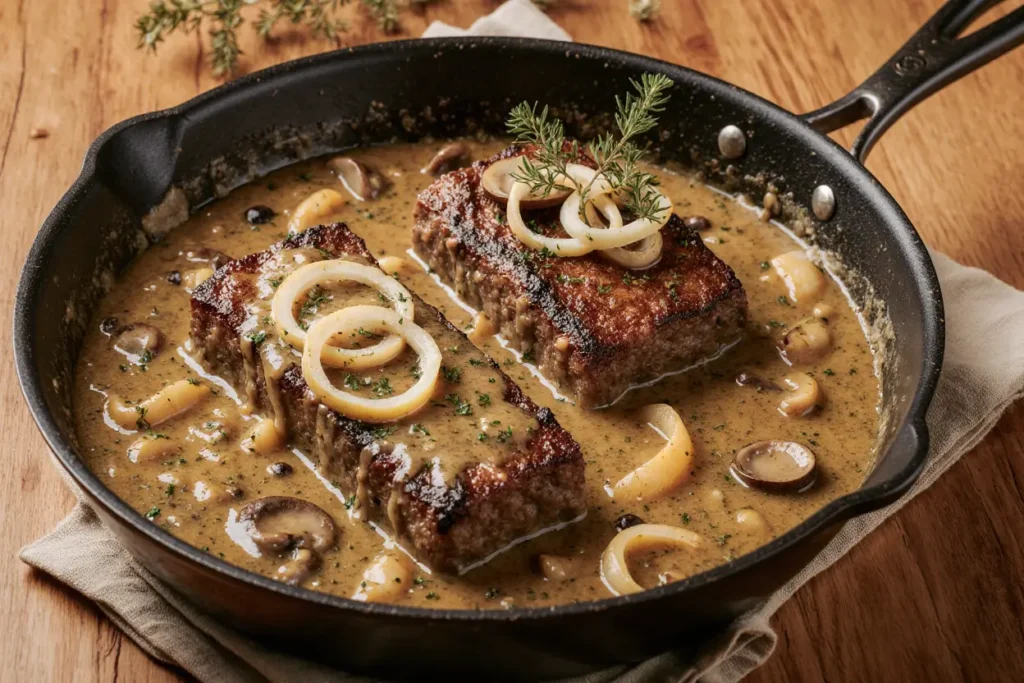
Step-by-Step Instructions
Step 1: Prepare the Herb Butter Foundation
Combine softened butter with minced garlic, fresh herbs, lemon zest, salt, and pepper in a mixing bowl. Using a fork, mash ingredients until evenly distributed, creating a fragrant, verdant mixture. Transfer to parchment paper, roll into a log shape, and refrigerate for at least 15 minutes to firm up.
Step 2: Season Steaks for Maximum Flavor Penetration
Remove steaks from refrigeration 30-45 minutes before cooking, allowing them to reach room temperature for even cooking. Pat completely dry with paper towels – moisture is the enemy of proper searing. Season generously with kosher salt and black pepper, pressing seasoning into the meat’s surface.
Step 3: Preheat Your Grill to Optimal Temperature
Heat your grill to medium-high heat (400-450°F). For gas grills, create a two-zone setup with one side on high heat and the other on medium. For charcoal, bank coals to one side. This setup provides both searing power and gentle finishing heat.
Step 4: Master the Initial Sear
Brush steaks lightly with high-heat oil to prevent sticking. Place steaks over the hottest part of the grill and sear for 3-4 minutes without moving them. This creates the Maillard reaction – the chemical process responsible for that coveted golden-brown crust and complex flavors.
Step 5: Execute the Perfect Flip
Using tongs (never a fork, which pierces the meat and releases juices), flip steaks once. Add smashed garlic cloves to the grill alongside steaks for aromatic infusion. Sear the second side for another 3-4 minutes to develop consistent browning.
Step 6: Move to Indirect Heat for Even Cooking
Transfer steaks to the cooler side of the grill to finish cooking through indirect heat. This prevents overcooking the exterior while ensuring the interior reaches your desired doneness. Insert an instant-read thermometer into the thickest part of the strip side for accuracy.
Step 7: Monitor Internal Temperature Precisely
For rare: 120-125°F, medium-rare: 130-135°F, medium: 135-145°F. Remember that temperature will rise 5-10 degrees during resting. Remove steaks when they’re 5 degrees below your target temperature.
Step 8: Rest and Finish with Herb Butter
Transfer steaks to a cutting board and tent loosely with foil. Rest for 8-10 minutes to allow juices to redistribute throughout the meat. Top each steak with a generous slice of herb butter during the final 2 minutes of resting, allowing it to melt and create a luxurious sauce.
Nutritional Information
Per Serving (one T-bone steak with herb butter):
- Calories: 680
- Protein: 52g (104% of daily value)
- Fat: 48g (including 28g from herb butter)
- Saturated Fat: 22g
- Carbohydrates: 1g
- Iron: 4.2mg (24% of daily value)
- Zinc: 8.9mg (81% of daily value)
- Vitamin B12: 6.2mcg (258% of daily value)
Nutritional Powerhouse Benefits: T-bone steak provides complete protein with all essential amino acids, supporting muscle maintenance and repair. The high iron content combats anemia, while abundant B vitamins support energy metabolism and nervous system function.
Healthier Alternatives for the Recipe
Leaner Cut Options: Substitute with grass-fed beef, which contains 50% more omega-3 fatty acids and higher levels of conjugated linoleic acid (CLA), supporting heart health and reducing inflammation.
Herb Butter Modifications: Replace half the butter with Greek yogurt mixed with herbs for a protein boost and 40% calorie reduction while maintaining creamy texture and flavor intensity.
Portion Control Strategy: Serve 6-8 oz portions instead of full steaks, paired with grilled vegetables to maintain satisfaction while reducing overall caloric intake by 30%.
Heart-Healthy Preparation: Use avocado oil for cooking and finish with olive oil-based herb mixture instead of butter, providing monounsaturated fats that support cardiovascular health.
Mineral Enhancement: Choose grass-fed, pasture-raised beef for higher levels of antioxidants, vitamins A and E, and beneficial fatty acids compared to grain-fed alternatives.
Serving Suggestions
Classic Steakhouse Presentation: Serve alongside loaded baked potatoes, grilled asparagus, and a robust Caesar salad for the complete steakhouse experience at home.
Wine Pairing Excellence: Bold red wines like Cabernet Sauvignon, Malbec, or aged Bordeaux complement the rich, savory flavors while cutting through the herb butter’s richness.
Modern Plating Ideas: Slice steak and fan over arugula salad with cherry tomatoes and blue cheese crumbles for an elegant, restaurant-style presentation.
International Fusion: Serve with chimichurri sauce and grilled vegetables for an Argentine-inspired feast, or pair with garlic mashed potatoes and roasted root vegetables for comfort food perfection.
Temperature Serving Strategy: Serve on warmed plates to maintain optimal eating temperature – cold plates can drop steak temperature by 15-20 degrees within minutes.
Common Mistakes to Avoid
Temperature Misjudgment: 45% of home cooks overcook steaks due to inadequate thermometer use. Invest in a quality instant-read thermometer and trust the numbers over guesswork or timing alone.
Insufficient Resting Time: Cutting into steak immediately after cooking causes up to 40% of juices to run out onto the plate instead of staying in the meat, resulting in dry, disappointing results.
Wrong Grill Temperature: Cooking over insufficient heat prevents proper searing and Maillard reaction development. Your grill should be hot enough that you can hold your hand 5 inches above the grates for only 2-3 seconds.
Seasoning Timing Errors: Salting steaks less than 15 minutes before cooking draws out moisture without adequate time for reabsorption, creating a gray, unappealing exterior.
Flipping Frequency: Constantly flipping steaks prevents proper crust formation. Flip only once for optimal browning and even cooking throughout.
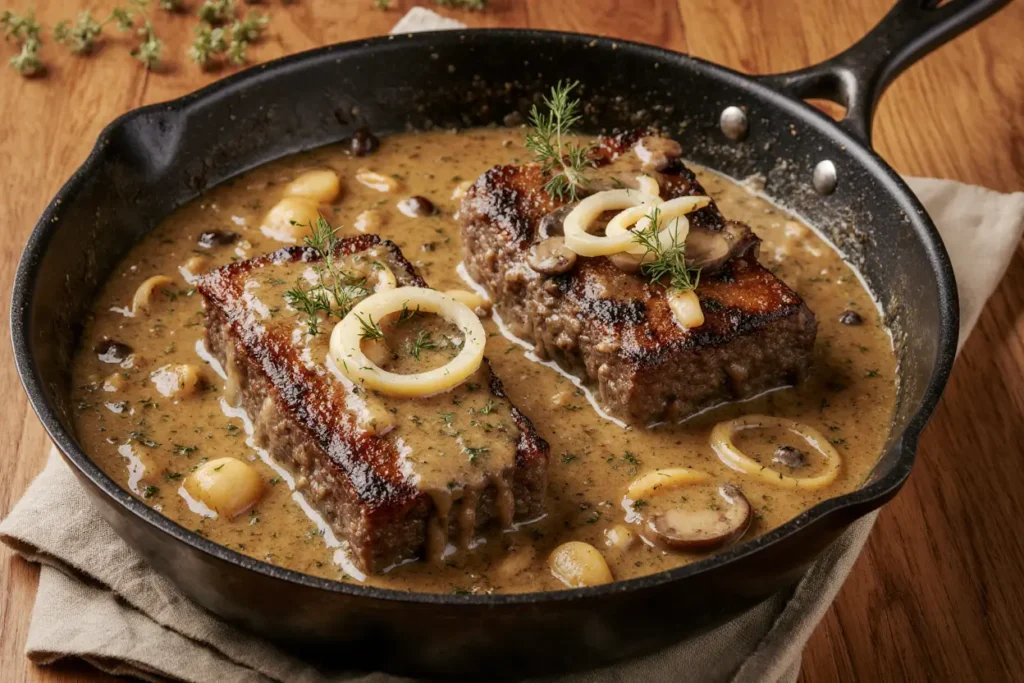
Storing Tips for the Recipe
Herb Butter Storage: Wrapped tightly in plastic wrap or stored in an airtight container, herb butter maintains peak freshness for up to 1 week refrigerated or 3 months frozen. Slice portions before freezing for easy use.
Raw Steak Handling: Store raw T-bone steaks in the coldest part of your refrigerator (usually the back of the bottom shelf) and use within 3-5 days of purchase for optimal safety and quality.
Leftover Steak Storage: Cooked steak stores well refrigerated for 3-4 days. Wrap tightly to prevent oxidation and moisture loss, which can create metallic flavors and tough texture.
Reheating Best Practices: Reheat leftover steak in a 250°F oven until warmed through to avoid overcooking. Alternatively, slice thin and use in salads, sandwiches, or stir-fries where additional cooking enhances rather than detracts from the meat.
Make-Ahead Strategy: Herb butter can be prepared up to one week in advance, actually improving in flavor as ingredients meld together over time.
Conclusion
Mastering the art of grilled T-bone steak with herb butter transforms your backyard into a five-star steakhouse, delivering restaurant-quality results that will impress family and friends alike. This description encompasses not just a recipe, but a complete cooking methodology that builds confidence and develops essential grilling skills.
The combination of proper technique, quality ingredients, and attention to detail creates an extraordinary dining experience that celebrates the primal satisfaction of perfectly cooked beef. From the initial sizzle on the grill to the final bite enhanced by aromatic herb butter, every element contributes to culinary success.
Don’t let another grilling season pass without mastering this fundamental technique. Fire up your grill this weekend and experience the satisfaction of creating steakhouse-quality results in your own backyard. Share your grilling victories in the comments below, and don’t forget to tag us with photos of your perfectly grilled T-bones – we love celebrating your culinary achievements!
FAQs
Q: How do I know when my T-bone steak is perfectly cooked? A: Use an instant-read thermometer inserted into the thickest part of the strip side. For medium-rare (most popular), aim for 130-135°F. Remember that temperature will rise 5-10 degrees during resting, so remove steaks slightly before reaching target temperature.
Q: Can I make herb butter ahead of time? A: Absolutely! Herb butter actually improves with time as flavors meld together. Make it up to one week ahead and store refrigerated, or freeze for up to 3 months. The convenience factor makes meal preparation much smoother.
Q: What’s the difference between T-bone and Porterhouse steaks? A: Both contain strip steak and filet portions separated by a T-shaped bone, but Porterhouse steaks have a larger filet section (at least 1.25 inches). T-bones have smaller filet portions but are often more affordable and equally delicious.
Q: My grill doesn’t get hot enough for proper searing. What can I do? A: For gas grills, ensure propane tanks are adequately filled and clean the grates for better heat transfer. For charcoal, use more coals and ensure they’re fully lit before cooking. Consider finishing steaks in a cast-iron skillet over high heat if necessary.
Q: How thick should T-bone steaks be for optimal grilling? A: Choose steaks 1.5-2 inches thick for best results. Thinner steaks cook too quickly and risk overcooking, while thicker cuts allow better control over doneness and more impressive presentation.
Q: Can I use dried herbs instead of fresh for the herb butter? A: While fresh herbs provide superior flavor and aroma, dried herbs work in a pinch. Use one-third the amount of dried herbs compared to fresh, and add them earlier in the mixing process to allow time for rehydration and flavor development.


